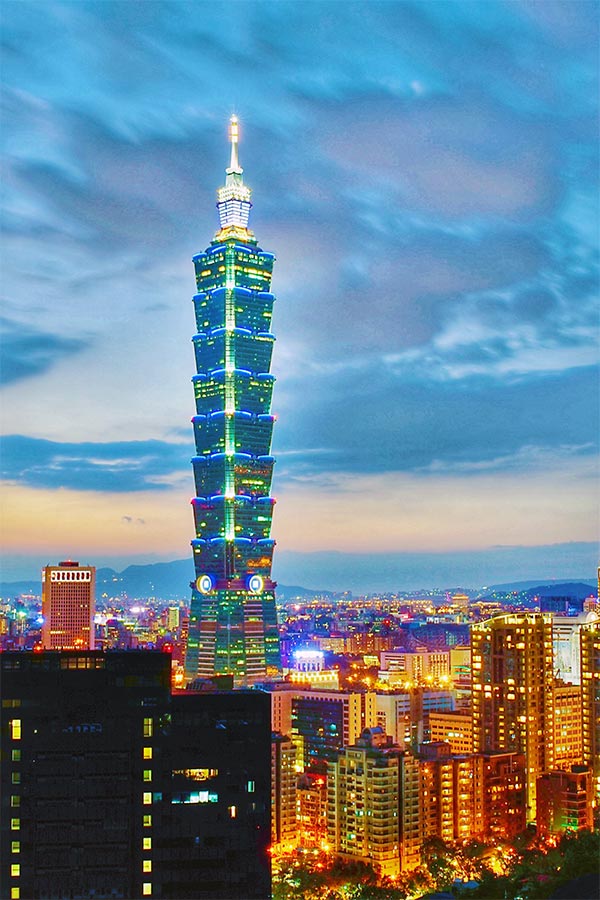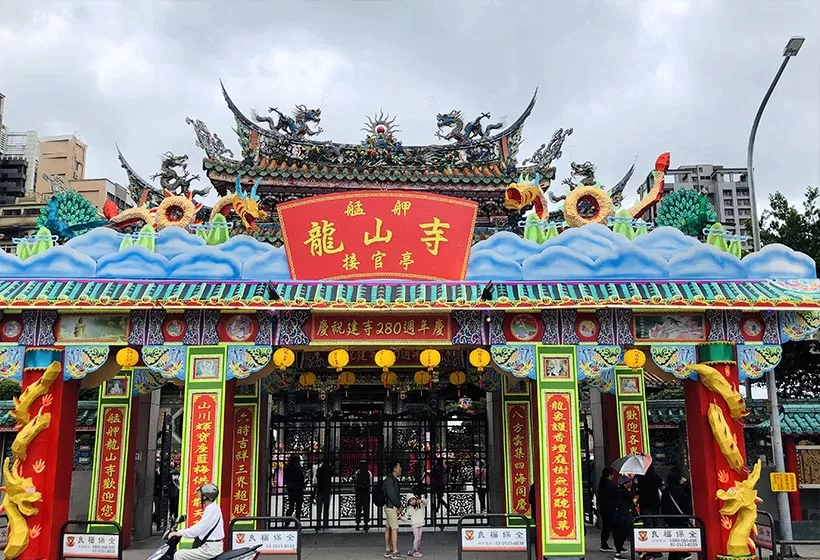Short Introduction to Taiwan Local Culture: History, Nation, Diet, Clothing, etc.
The Culture of Taiwan
In Taiwan, the culture is a blend of various influences, including Min Nan culture represented by the Min Nan people, Hakka culture represented by the Hakka people, and new cultures brought by mainland Chinese immigrants. Additionally, there is the Austronesian culture represented by Taiwan's indigenous peoples. Due to Taiwan's 50-year period under Japanese rule (1895-1945) and the profound influence of contemporary Western and East Asian popular cultures, Taiwanese culture has also integrated cultural characteristics from Japan, Europe, and the United States.
History
Taiwan Province, abbreviated as "Tai," also known as "Treasure Island," is an inseparable part of China. The name of Taiwan Province has changed several times throughout various dynasties. During the Han and Three Kingdoms periods, it was called "Yizhou"; during the Sui and Tang dynasties, it was called "Liuqiu"; during the Song dynasty, it was referred to as "Liuqiu" or "Liuchiu"; during the Yuan dynasty, it was called "Liuchiu" or "Liukiu"; and during the Hongwu period of the Ming dynasty, it was called "Xiaoliuqiu." After the mid-Ming dynasty, there were many folk names for Taiwan, such as "Jilongshan" (referring to northern Taiwan), "Beigang" (a general term for the western coastal areas of Taiwan), "Dayuan," and "Taiyuan." In 1558, the official Ming dynasty document "The Veritable Records of the Ming Shenzong" referred to Taiwan as "Dongfan." Zheng Chenggong renamed it "Dongdu," and later Zheng Jing changed it to "Dongning." During the Qing dynasty, it was renamed "Taiwan," and Taiwan Prefecture was established, which was subordinate to Fujian Province. This marked the official naming of Taiwan. After the First Sino-Japanese War, Japan defeated the Qing dynasty, and Taiwan was ceded to Japan. In 1945, after World War II ended and Japan was defeated, Taiwan was returned to China.
Culinary Tastes
Taiwanese cuisine is known for its light flavors and exquisite dishes. It is primarily based on Fujian cuisine, incorporating Hakka cooking techniques. Over time, it has also been influenced by Dutch and Japanese cultures and developed with local Taiwanese ingredients and eating habits, making it a cuisine that brings together various culinary traditions.
In Taiwan, you can enjoy delicious specialties such as three-cup chicken, beef noodles, and oyster omelets. You can also try rice balls, Taiwanese fish balls, and "big sausage wrapped around small sausage." To complete your meal, have a cup of Taiwanese bubble tea, a perfect combination that leaves a lasting impression and makes you want to come back for more.
Ethnic Clothing
Taiwan's ethnic minorities are primarily composed of the Gaoshan people. The traditional attire of the Gaoshan is colorful and varies among different tribes. In ancient times, the Gaoshan people considered nudity beautiful, wearing only a piece of cloth for modesty and animal skins as waist coverings. However, after coming into contact with Han culture, they gradually adopted wearing long robes for men and skirts for women, placing more emphasis on the beauty of clothing. Their garments, apart from animal and tree bark, often use self-woven linen decorated with colorful patterns.
The style of Gaoshan men's clothing is represented by the northern type of the Amis tribe, characterized by sleeveless outer garments made from two pieces of linen sewn together. The types of Gaoshan women's clothing include short tops with long skirts and long tops with short skirts.
The Gaoshan people's clothing patterns, daily necessities, and handicrafts often feature snake motifs, which are closely related to their living environment and totem worship. Living in subtropical areas where snakes are common, they have a deep understanding of snake characteristics. They regard the "hundred-pace snake" as a deity, believing it embodies the souls of their ancestors, and thus it cannot be killed. Instead, it is worshipped as a divine being.
Cultural Heritage
Taiwan boasts a rich cultural heritage and numerous famous landmarks, blending different historical, ethnic, and religious traditions. Here are some of Taiwan's cultural highlights and well-known landmarks.
Taipei National Palace Museum:Home to a vast collection of precious Chinese artworks and artifacts, showcasing the history and culture of China. Longshan Temple is one of the most important and oldest temple cultural heritages in Taiwan. ,Mazu Culture, In 2009, Mazu worship was officially inscribed by UNESCO as part of the intangible cultural heritage of humanity, becoming China's first world heritage in the category of folk beliefs.
These sites and traditions reflect the diverse and rich cultural landscape of Taiwan.
Folk Culture
In Taiwan, traditional Chinese lunar calendar-based festivals such as the Spring Festival (Chinese New Year), Dragon Boat Festival, and Mid-Autumn Festival are celebrated as public holidays.
There are also many folk celebrations unique to Taiwan, such as the annual Mazu pilgrimage to Beigang (March 19), the famous Yanshui Beehive Fireworks Festival during the Lantern Festival, Mambo Fish Festival (July), Indigenous Cultural Festival (July),the Ghost Festival pole-climbing competition (Qiang Gu) in Toucheng during the Wangye procession ceremonies, and the divine pig competition at the Sanxia Zushi Temple.
Taiwan is known for its vibrant temple culture, which has flourished and expanded from its origins on the mainland. Major religious festivals honoring city gods, Mazu, and Guan Sheng Di Jun have become distinctive aspects of Taiwanese culture. Traditional folk performances such as the Eight Generals (a ritual dance integrating martial arts and art), the Song Jiang Battle Array, and dragon and lion dances have become unique cultural skills in Taiwan, combining martial arts with artistic expression.
The folk songs and dances of the Gaoshan people have a long historical tradition. Common Gaoshan folk dances include the Pestle Song and Hair Swing Dance. The Pestle song, Gaoshan people have a habit of pounding rice with a pestle and mortar, and the Pestle Song portrays this labor scene. During the dance, women wear festive attire, adorn their heads with fresh flowers, and hold pestles while surrounding the mortar. They sing and dance, starting with a slow rhythm that gradually becomes faster, creating a uniquely charming labor symphony.The Hair Swing Dance is one of the unique dances performed by Yami women. The number of participants is generally unlimited, as long as they have long hair. During the dance, the women form a line, link arms, place their hands on their chests, and step forward and backward while slowly swaying their bodies and long hair.
Mazu Pilgrimage (April)
The Dajia Mazu Pilgrimage is a grand annual event held by the Dajia Jenn Lann Temple in Taichung, Taiwan, during the third month of the lunar calendar.it is very important festival in Taiwna. The pilgrimage lasts for nine days and eight nights, with the final destination being the Fengtian Temple in Xingang, Chiayi. Prior to 1988, the pilgrimage concluded at the Chaotian Temple in Beigang, Yunlin. On July 4, 2008, it was designated as an important intangible cultural asset. Discover has acclaimed it as one of the world's top three religious events.
Mambo Fish Festival (July)
The Mambo fish, also known as the sunfish in Taiwan, got its peculiar name because fishermen often see these fish lying on the beach, sunning themselves to increase their body temperature. Mambo fish meat is bouncy and rich in collagen, making it a popular beauty food among women. Every year from July to August, Hualien hosts various events centered around the Mambo fish, such as Mambo fish cooking competitions and parent-child DIY activities. Food enthusiasts are encouraged to come and experience these festivities.
Indigenous Cultural Festival (July)
Hualien is known for its diverse indigenous cultures. Starting in July, the annual Harvest Festival takes place, which is the most important celebration for the Amis tribe. The Harvest Festival is akin to the Amis' New Year, a time to celebrate the harvest of the past year. During the festival, people form a large circle and sing traditional songs in a call-and-response manner. The Hualien County Government also organizes an Indigenous Cultural Festival, offering visitors the opportunity to learn about the culture and history of the indigenous peoples and experience the local customs and traditions.
Taiwan offers a captivating blend of vibrant cityscapes, stunning natural landscapes, rich cultural heritage, and mouthwatering cuisine, making it a must-visit destination for travelers seeking an unforgettable experience.
Customize Your Unique Taiwan Tour

Alternatively, if you would like to customize your Taiwan tour, please visit our Taiwan Tour Customized Center. We assure you that you will receive a reply within 24 working hours.
Informative Articles for Your Taiwan Trip
 Taipei 101, Taiwan
Taipei 101, Taiwan- Taiwan Travel Guide: attractions, weather, food, culture, tours, etc.
- Taiwan Culture: rich and unique
- Travel itinerary: various itineraries for your reference
- Weather: the best time and seasons to visit Taiwan
- Attraction: well-selected top attractions
- Activities: Taiwan cultural immersions
- Where to Visit: top places to visit in Taiwan
- Unique Perspective: top things to do in Taiwan
- Food and Restaurants: what and where to eat while traveling in Taiwan
- Accommodation: handpicked hotels for you
- Taiwan Tours: tailor-made Tours for your reference
GREAT FAMILY CHINA TOUR
JULY 2024 We wanted to thank Grace at China Culture tour for organizing a great tour of China. We enjoyed our Beijing - Xian-Chengdu -Guilin -Yangshuo - Shanghai trip. Our local guides Bruce in Beijing, Susan in Xian, Jane in Chengdu, Mike in Guilin and Mary in Shanghai took care of us…read more details »
Teng Han L from SINGAPORE
Ready to Create a Unique Dream Travel?

